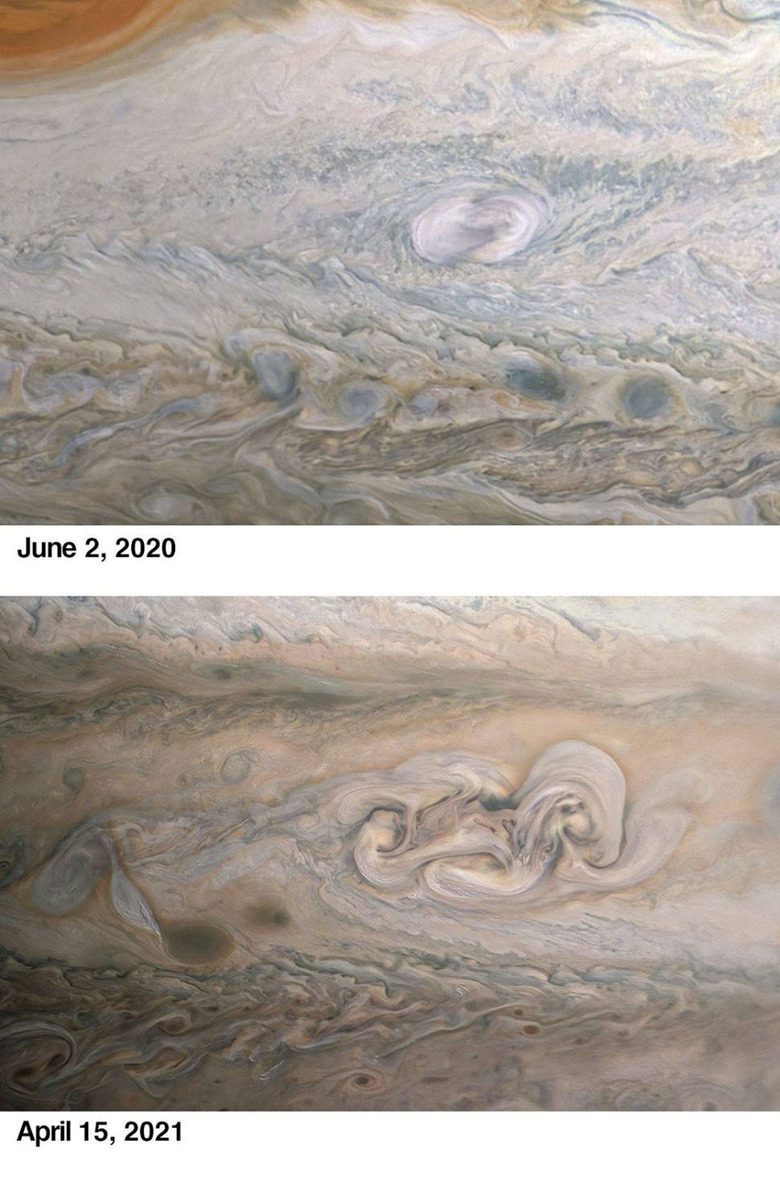Clyde's Spot On Jupiter Has Changed Significantly Since Last Year
Everyone is familiar with the giant storms that rage in the atmosphere of Jupiter that we see as swirling patterns in the dense clouds of the planet's atmosphere. While most are familiar with the giant red spot, many may have never heard of another storm called Clyde's Spot, first discovered on Jupiter in 2020. The larger image below showed the spot when it was found on June 2, 2020, looking very much like a small and white version of the Giant Red Spot Jupiter is famous for.Another image that was taken on April 15, 2021 that shows Clyde's Spot has changed significantly. NASA's Juneau spacecraft took both photos, and NASA says that the feature is a plume of cloud material that erupts above the top layer of the Jovian atmosphere. The image taken on April 15, 2021, was snapped by Juno on its 33rd fly over the atmosphere of Jupiter.
Clyde's Spot is a swirl of chaos in that image without the uniform appearance it had when first discovered. The photo snapped in 2020 was taken at an altitude of about 28,000 miles above the Jovian clouds. The image taken this year was photographed by Juno at an altitude of 16,800 miles above the cloud tops. The new image also shows that the spot has drifted further away from the iconic Great Red Spot that is one of the most significant features of Jupiter.

NASA says that it's common for features such as Clyde's Spot to pop up in the atmosphere of Jupiter, but typically they dissipate quickly. Observations from the JunoCam instrument show that while it's changed significantly, Clyde's Spot is still visible after almost a year. That fact makes the spot rather unique among features in Jupiter's atmosphere. The Great Red Spot has been raging for centuries.
